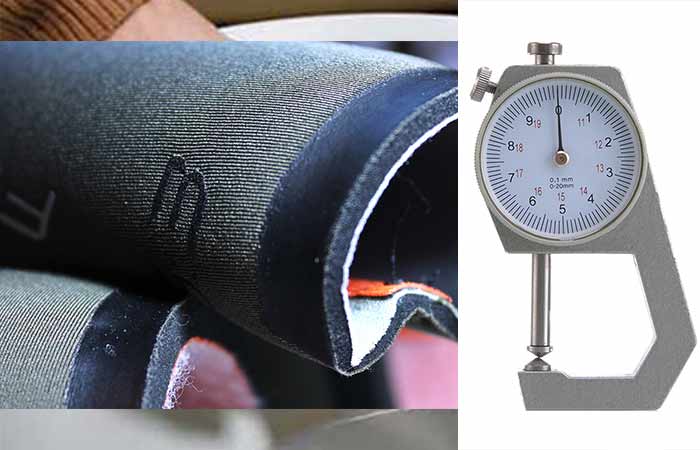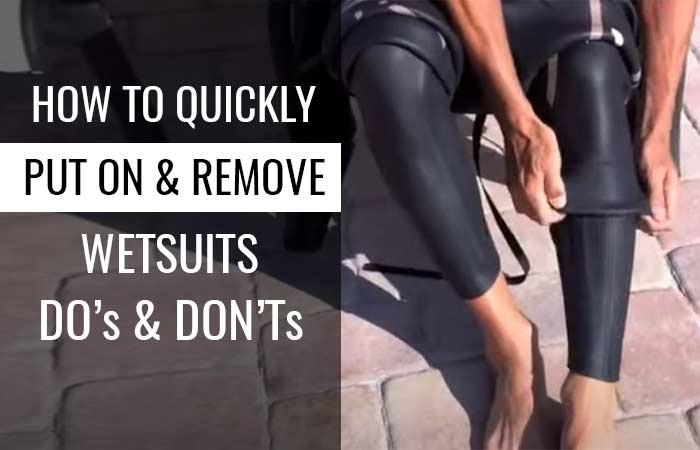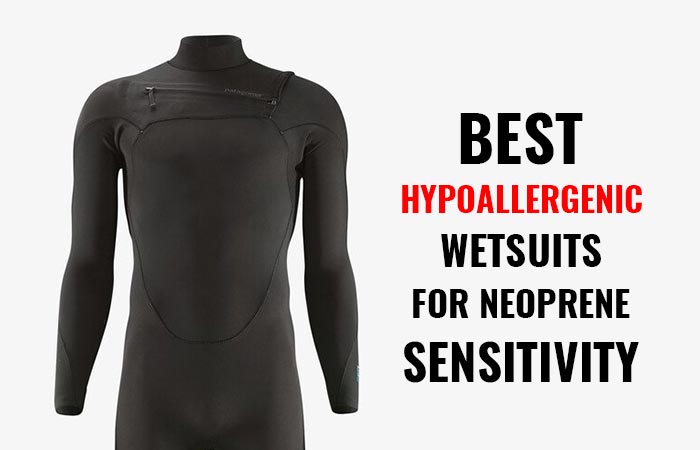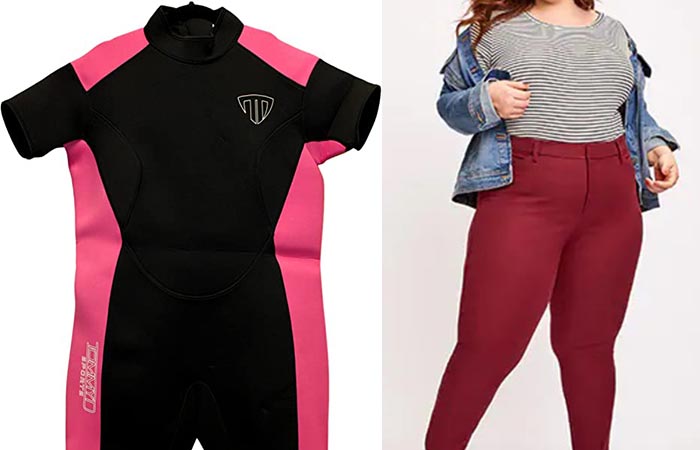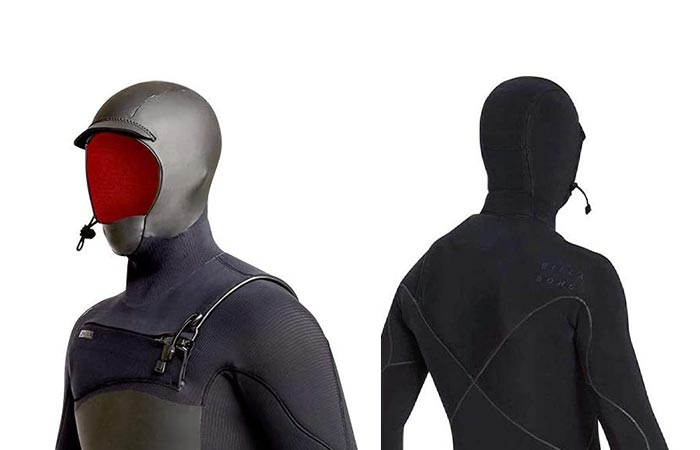What to Wear Under Wetsuit: Female, Men & Triathlons Undergarments
Wetsuits give you the best protection when under water. Even when on the water such as during surfing or paddling, a wetsuit will make the adventure very enjoyable. This is thanks to the protection from the cold, stings, UV rays from the sun and many other aspects.
At times, you may need extra clothing to go with the wetsuit for extra protection and other reasons. You could be sensitive to neoprene and other wetsuit materials and thus need to protect your skin from the material. Or you could just need extra clothing to keep out the cold.
In either case, having something under the wetsuit is the most preferred option. What you wear, how you wear it and when you have something under your wetsuit is highly subjective. With some people, the best way to put on a wetsuit is right on the bare skin. To others, they must have something under the skin. Either way, we take a look at when you need to wear something under the wetsuit and what you can wear.
Female Undergarments for Wetsuits
If you need an undergarment for your wetsuit, these are the options available:
The options for ladies are as follows:
Sleeveless Vest
For the upper body, you have the option of either a T-shirt or sleeveless vest. The most preferred one is the vest as it offers much more freedom and style than a T-shirt does for ladies. It shouldn’t be just any other type of vest but one specifically meant for this role.
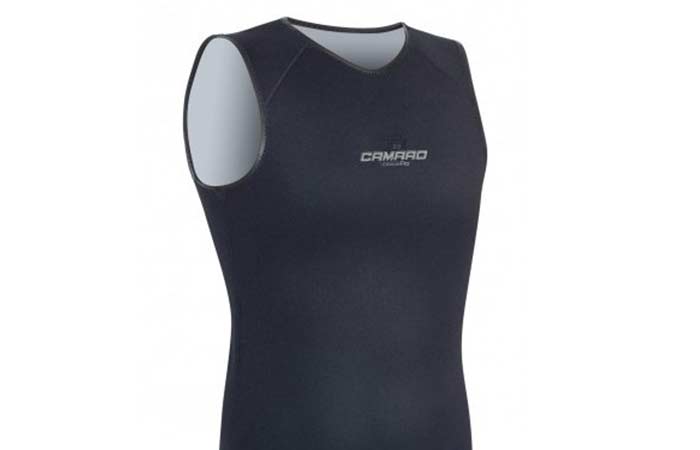
The vest should be made of material that dries out fast, is thin, can stretch and is lightweight. You can thus use it under the wetsuit or on its own. It can also be made of neoprene or some other favorable material that meets these traits.
One-piece Swimsuit
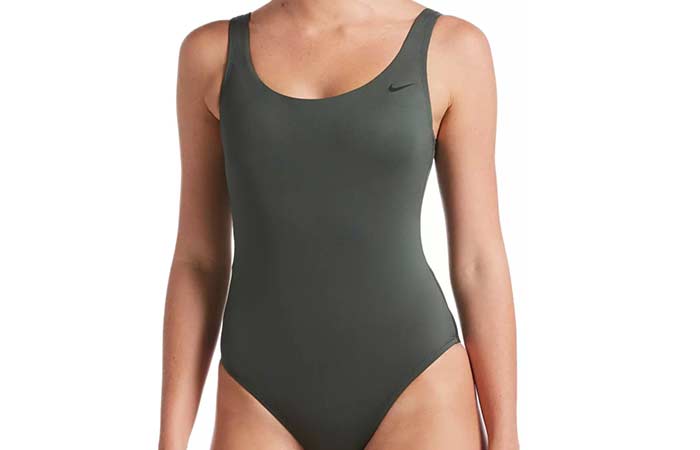
Another favorite undergarment for women who dive or swim is the one-piece swimsuit. It’s the most basic of a swimwear covering the torso but without arms and the legs. Like the sleeveless vest, it should be made of light and stretchable material to provide a good fit and still work under the wetsuit or on its own.
Diving Shorts
Diving shorts are another favorite for women when diving. They cover from the upper side of the knees to the waist. Like the other pieces of undergarments in this list, diving shorts are supposed to be thin, lightweight and giving you a good fit.
his way, you can put on a wetsuit over the shirts and don’t feel stuffed up in the waist region. The shorts should preferably be made of the same material as the wetsuit. If not, they should have similar properties.
Full-Body Jumpsuit
If you need cover for the whole body, you can instead go for the full body jumpsuit. This one offers protection from the ankles to the neck and wrists and is one of the most favored. If you want to evade a thick suit yet the water is cold, this jumpsuit will help you do just that. It too should have the right properties just like the wetsuit.
Pantyhose
Pantyhose is also used as an undergarment for wetsuits given it provides the same benefits you’d get from other garments. Pantyhose helps you put on your suit much easier and add a layer of warm and protection to your body.
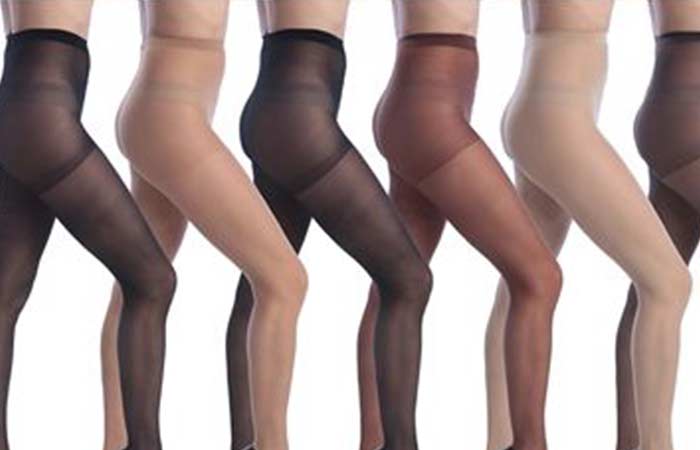
These undergarments are easy to find. It all depends on your needs and the benefits you aim to gain from them.
Male Undergarments for Wetsuits
For the guys, the options are as follows:
Rash Guard
If you need extra warmth or simply to guard your skin from coming into contact with the wetsuit, a compression or rash guard will do just that. It’s a thin and stretchable shirt covering the upper arms all the way to the waist. It can also be worn on its own and dries out very fast when drying.
Briefs
Briefs are best suited to the warm waters in the tropics or other warm area and can be used as the only piece of clothing you have on you when going for a swim.
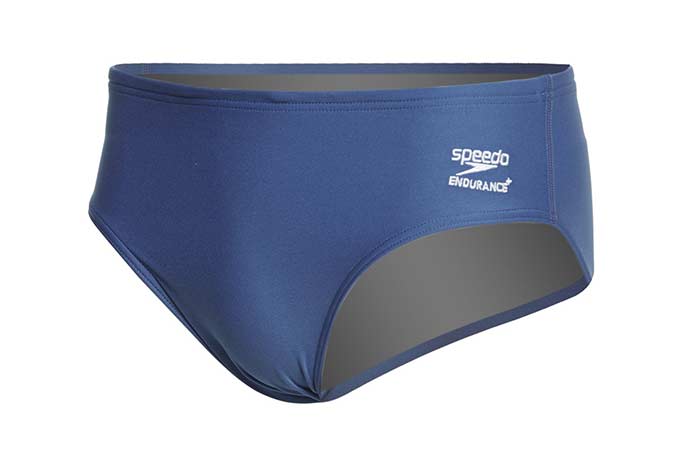
If you still need a wetsuit on your body, briefs are also some of the best as they allow for protection of your privates while still affording lots of freedom. They come in handy especially when you hire a wetsuit and want to prevent against infections.
Diving Shorts
Diving shorts are an easy choice when it comes to an undergarment for men. They give a good and firm feeling while offering some benefits against the cold in cool waters. They too have to be tight and should not wrinkle up when in use. Like the other undergarments, you need to have a short that dries up fast.
Full-Body Jumpsuit
Just like women, men have full-body jumpsuits to cover from the ankles to the neck and wrists. This is a great undergarment if you’re working in a cold environment and need an extra layer of cushion from the cold. You can use it on its own or under a wetsuit for a complete look and better protection from the cold.
Pantyhose
While men will not like being seen with pantyhose on the beach, they’re the cheapest of the undergarments you can have. They help put on and off the wetsuit quite easily. Besides that, they add a layer of protection on the body.
These undergarments can be easily accessed at the same place you got your wetsuit.
Triathlons
With triathlons, the choice is usually a swimsuit underneath the wetsuit and bike shorts (diving shorts) for the competitive triathletes.
The focus of this choice is to allow for easy switching when the athletes switches to another section of the race. On a bike, they can easily switch to a bike short to cool off and then pull on a wetsuit when entering the water.
Why it is important to wear the undergarments?
The reasons you may need to have an undergarment for your wetsuit are many and varied. The most common ones are as follows:
Better Protection and Insulation
The most obvious reason for getting an undergarment for your wetsuit is better protection. With wetsuits, the thicker they are, the better they are at regulating the body temperature. However, they also run the risk of reducing the flexibility of the wetsuit. You can thus only go up to a certain level with the wetsuit’s thickness.
One solution to this issue is getting an undergarment while wearing a relatively thin wetsuit. With wetsuits working by trapping a thin layer of water on the skin, you’ll have two layers of garments each having a layer of water under it making thermoregulation much better. You’ll thus feeler warmer with a thin wetsuit and a thin undergarment than one thick wetsuit.
The other reason is protection from UV rays, stings, rock cuts and others. It’s obviously better to have more layers of cloth than a single one when it comes to dealing with animal stings. With some wetsuits lacking UV protection, an extra layer of clothing gives you a better chance at staying safe while in the water.
For Decency Reasons
Wetsuits can be a protective but there comes a time when you need to take it off for a break. This may occur either when you’re safely in your room or in public. In the tropics, for example, the water may get so warm that you need to quickly shade off the suit.
With an undergarment, you can do it right where you stand. Without one, you’ll be forced to stay in the wetsuit until you’re safely in a private place. On the beach, getting a private place can be a daunting task. The advantage with an undergarment is you can still keep your decency even when coming out of the suit. You’ll still be protected and clothed when you take off the suit.
For Comfort
While wetsuits are built to be as comfortable as possible, frequent use has been known to be quite uncomfortable for some divers. Your motions lead to a constant rubbing of your skin with the neoprene which can lead to a lot of discomfort.
The most affected parts of the body are the armpits, neck, crotch and behind the knees. You may notice some chaffing in these regions and an anti-chaffing cream or gel can come in handy. Some people are allergic to neoprene and putting the wetsuit on their skin can be dangerous.
You can, however, avoid all the trouble by simply wearing an undergarment with your wetsuit.
Hygienic Reasons
If you have your own wetsuit that you don’t share with anyone, keeping it clean is quite easy. Even then, having it come into contact with your skin even in the sensitive parts of the skin can be risky since you might get infections and the likes.
If you hire one, it’s even more difficult that you keep the wetsuit clean and infection-free. Even the idea of getting into someone else’ wetsuit that they could have used naked isn’t so pleasing.
The solution to both issues is simply having something else under the wetsuit to cover your skin as the wetsuit goes on top.
Can you Wear Wetsuits without Undergarments?
You can indeed wear wetsuits without undergarments. This will depend on whether you’re comfortable doing so and if you own the suit. if your skin doesn’t react to neoprene, you own the suit and it doesn’t hurt you when used without an undergarment. You can go ahead and use it on its own.
However, wearing wetsuits without undergarments has some disadvantages including;
- Chafing that can lead to discomfort
- Allergic reactions to the material from which wetsuits are made of.
- Depending on your destination, Wearing nothing underneath may make changing in and out of your wetsuit difficult.
- Ladies can find it hard to roll the suit to the waist during breaks or when it too hot.
What NOT to wear under Wetsuits
You can’t wear normal clothing under your wetsuit. For example, a normal T-shirt will do away with the benefits of a wetsuit since it’ll allow water to freely circulate around the skin carrying away the heat from the skin.
The same goes for any other baggy clothing. The aim of an undergarment is to maintain and even improve on the benefits of a wetsuit.
Generally, any garment or body wear that will make you uncomfortable or interfere with the functioning of the wetsuit should be avoided.
More on Wetsuits
- How do Wetsuits Work?
- What are Wetsuits Made of? Types & Top Brands
- Wetsuits Colors: Why Black? What is the Best Color?
- Wetsuit vs Dry Suit
- How to Properly put on a Wetsuit, Remove+ Dos & Don’ts
- How Tight/Fitting should a Wetsuit be?
- Wetsuit Thickness Guide + Temperature Chart
- How to Wash a Wetsuit + Best Cleaners, Shampoo & Soap
- How to Dry a Wetsuit + Best Drying Hangers & Racks
- Wetsuit Storage and Care Tips
Best Wetsuits

